The tie rod end is a small ball-and-socket joint on the outer end of the tie rod, which conveys motion from the steering gear to the steering knuckle.
If your tie rod ends are worn out, you may begin to notice some handling and tire problems—both of which can compromise your vehicle’s safety and performance aspects.
Common Signs of Bad Tie Rod Ends
A bad tie rod end can be fairly easy to detect if you know what the signs are. However, in some cases, these symptoms can also be too mild to notice, which can lead some drivers to ignore them. Mechanics will do what is called a “dry park check,” where they lie under the car with a flashlight (engine off) and have a helper turn the wheel back and forth slightly so they can spot any play the tie rod ends may have developed.
Another method is to raise the car on a lift or put it on jack stands and grab each front wheel at the 9 o’clock and 3 o’clock positions and then apply pressure (push with one hand, pull with the other, and then reverse) just to see if there is noticeable play. In this way, inner tie rod ends on rack and pinion can be checked for wear, but somebody needs to be watching under there while the play is being checked.
But since the tie rods are the link between your car’s steering wheel and the front wheels, any issues should be taken very seriously.

Here are some of the most common bad tie rod end symptoms:
Steering Wheel or Vehicle Vibration
The tie rod ends link the rest of the steering system—including the steering wheel—to the front wheels. If one tie rod end fails, it can often result in wheel behavioral changes that can be felt when operating the steering wheel.
A loose tie rod end can make the steering wheel shaky. The vibration typically worsens as you pick up speed or while cornering.
Loose Steering
Loose steering is characterized by being able to rotate the steering wheel freely with little response from the wheels. This could be due to a loose tie rod end.
Make sure to address the issue immediately by bringing your car to a certified mechanic or by replacing the failing tie rod end.
Unusual Noises
Tie rod ends feature a lubricated ball stud and bearing that’s sealed within a rubber boot. The lubricant allows the bearing to move smoothly.
If the boot is damaged or cracked, the lubricant can leak and cause the bearing to grind, since it’s now operating metal-to-metal.
When this happens, you may hear squeaking noises, especially when turning.
Uneven Tire Wear

Normally, well-maintained tires wear evenly. That means you’re in trouble if one in the set wears faster than the others. Uneven tire wear can be caused by numerous failing components, one of which is a bad tie rod that throws off your car’s alignment.
To confirm this, do a visual inspection or bring your car to your trusted mechanic.
Bad or Poor Wheel Alignment
In case one of the tie rod ends goes bad, the affected wheel won’t be able to retain its geometry. As a result, your car’s wheel alignment will be thrown off, and that can lead to issues such as abnormal tire wear and a vehicle that pulls to one side while driving.
No Symptoms
Sometimes, bad tie rod ends produce no symptoms at all or there are symptoms but they are too mild to notice.
What Causes Tie Rod Ends to go bad?
Most tie rod ends simply wear out over time. There’s an exception to this, however. Older cars and a few modern trucks have tie rod ends with grease fittings that require regular maintenance—failing to regularly grease them can result in serious consequences.
The grease can also leak through a cracked or damaged rubber boot, and road grime can mix with the grease, wearing the joint out quickly. Pumping too much grease into the joint can burst the boot, so be careful if you’re greasing one that has a fitting.

Regardless, if you notice your tie rods are causing your car to underperform, don’t hesitate and bring your car to an experienced mechanic. A damaged tie rod end can cause grave accidents, so have it replaced immediately.
The Role of Tie Rod Ends in the Steering System
Each front wheel is bolted to a hub that spins on bearings around a spindle. That spindle is part of the steering knuckle, which is mounted so that as the knuckle changes angles on what is referred to as the steering axis, and as the knuckle changes angles, so does the spindle, the hub, and the wheel.
Both front wheels have to change angles at the same time as the steering wheel is turned. This, coupled with the fact that the wheels are rolling on the pavement and carrying the weight of the vehicle, enables you to turn the steering wheel and control the direction (left or right) that the car will travel while it’s in motion.
Rotating the steering wheel rotates the steering column shaft, which, at its bottom end, is connected to a steering gear (either an old fashioned steering box or more commonly now, a rack-and pinion).
The steering gear (whatever type it is) connects to the steering knuckle arm either in front of or behind the steering axis so that moving the tie rod will change the angle of the knuckle during steering maneuvers. The tie rod end is a small ball-and-socket joint on the outer end of the tie rod, which conveys motion from the steering gear to the steering knuckle.

What are Inner and Outer Tie Rod Ends?
Regardless of whether the steering gear is a gearbox or a rack and pinion, there are typically both inner and outer tie rod ends. On vehicles with steering gearboxes, both tie rod ends will essentially look the same, but one of the two will always have left-hand thread where it screws onto the tie rod, because that’s how steering toe adjustments are made. You turn the tie rod and that changes the distance between the inner and outer tie rod ends, thus changing the toe adjustment. This is the most common alignment adjustment on all vehicles and is almost always done the exactly the same way.
Inner Tie Rod Ends
On steering gears, the inner tie rod end is hidden by the accordion boot on steering rack housing that keeps dirt out of the rack, the inner joint always threads onto or into the end of the steering rack, depending on the design. This inner ball joint also has a ball and socket joint.
Both types of tie rod ends are fairly robust, but both kinds will eventually develop wear, and when they do, they will eventually develop enough play to become a safety hazard if there is too much play. In extreme circumstances, the ball can come out of the socket and cause the vehicle to crash. This is more than hypothetical – it actually happens sometimes – more than you think.
Outer Tie Rod Ends
The tie rod ends that are not hidden by the accordion boot on the rack (these would be the outer tie rod ends) have a rubber boot that prevents dirt, road salt, and water from entering the ball and socket area.
Some tie rod ends have grease fittings – most of the time the ones installed at the factory don’t have grease fittings, but replacement tie rod ends usually do. When the tie rod end boot bursts, joint wear inevitably accelerates – dirt mixes with the grease and forms a grinding compound of sorts that wears the joint out fairly quickly. If the joint gets dry, it may squeak, but that’s more common with the ball joint(s) on which the knuckle rotates as it changes the steering angle.
A word of advice from Richard McCuistian, ASE-certified Mechanic:
If you’re having an oil change done at a tire shop and the service advisor blind-sides you with a massively high estimate for front end parts you didn’t know you needed, insist on walking out to the vehicle with the mechanic and having him show you exactly why you need the work he’s trying to sell you. If he’s uncomfortable doing that, something is up.
If you’re having an oil change done at a tire shop and the service advisor blind-sides you with a massively high estimate for front end parts you didn’t know you needed, insist on walking out to the vehicle with the mechanic and having him show you exactly why you need the work he’s trying to sell you. If he’s uncomfortable doing that, something is up.
–Richard McCuistian, ASE Certified Master Automobile Technician
Take good notes and snap good pictures of the parts he says are bad using your smartphone, and get his name, too.
Remember, it’s your car and your choice. Some shops will try to scare people into getting hundreds of dollars worth of work they don’t need.
If he shows you obvious wear (burst boots, dry joints, lots of lateral play, etc.) You probably need the work. But always get a second opinion from another shop without mentioning anything the first shop said. If the shop trying to sell you the work gets angry because you want a second opinion, you probably need to have the work done somewhere else anyway.
Watch these videos to understand how to replace your inner and outer tie rod:
Finding a New Tie Rod End for Your Vehicle
Once your mechanic confirms that your ride’s tie rod end is faulty, it’s best to have it replaced immediately. Here at CarParts.com, you can find a selection of tie rod ends sourced from the best brands in the industry.
Our tie rod ends all come with a low-price guarantee. You won’t have to break the bank just to get an OE-quality replacement for your ride. And because we’re confident in the quality of our products, we accept 60-day returns and offer a lifetime replacement guarantee for qualified purchases.
Ready to start looking for a new tie rod end? Use our vehicle selector tool to check for fitment, and toggle our search filters to browse compatible parts according to your preferred brand or price range.
If you have questions about your order, don’t hesitate to contact us via our toll-free hotline. A friendly representative will be ready to answer your queries.
Take a look at our selection of tie rod ends, and order yours today!
Products Mentioned in this Guide
Shop this Project



Any information provided on this Website is for informational purposes only and is not intended to replace consultation with a professional mechanic. The accuracy and timeliness of the information may change from the time of publication.


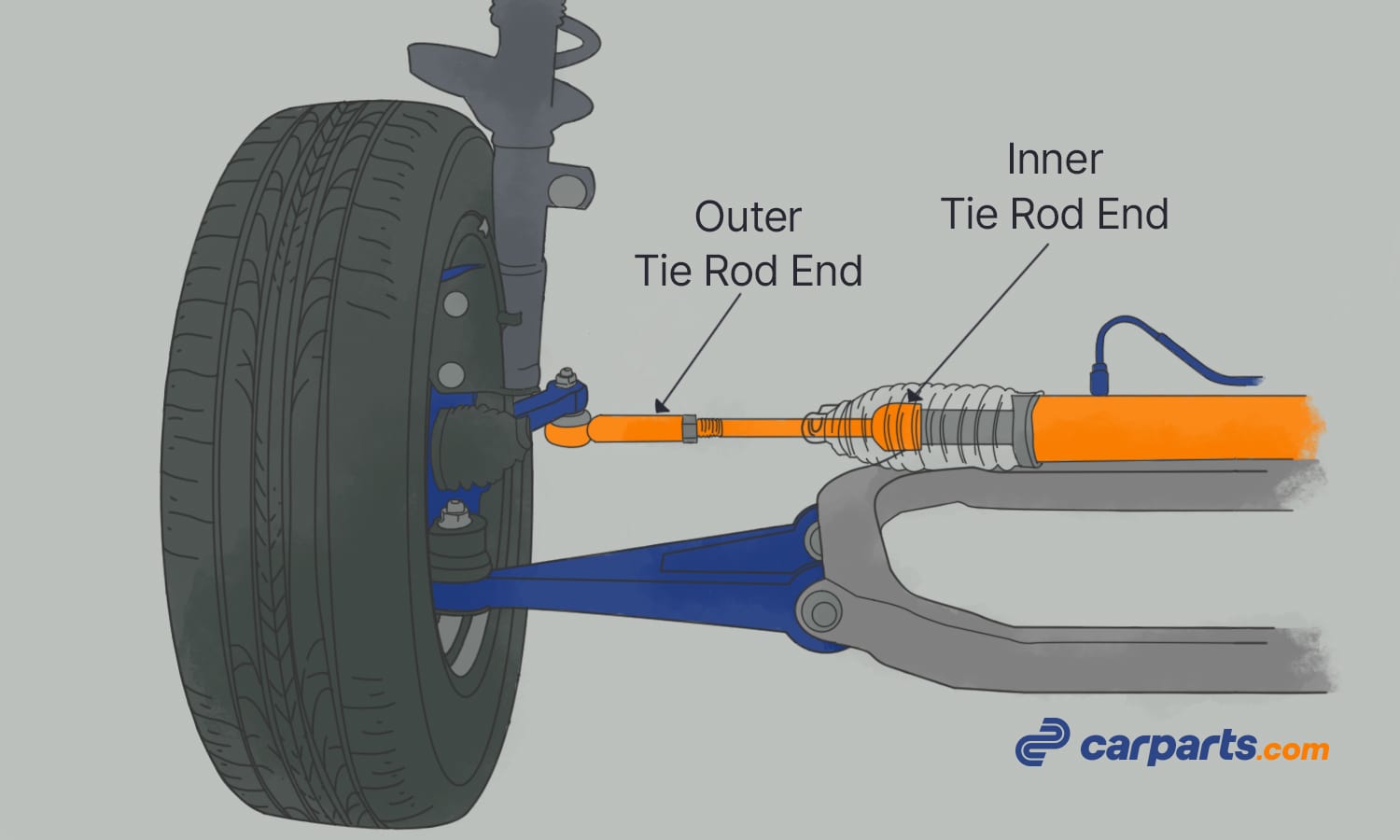
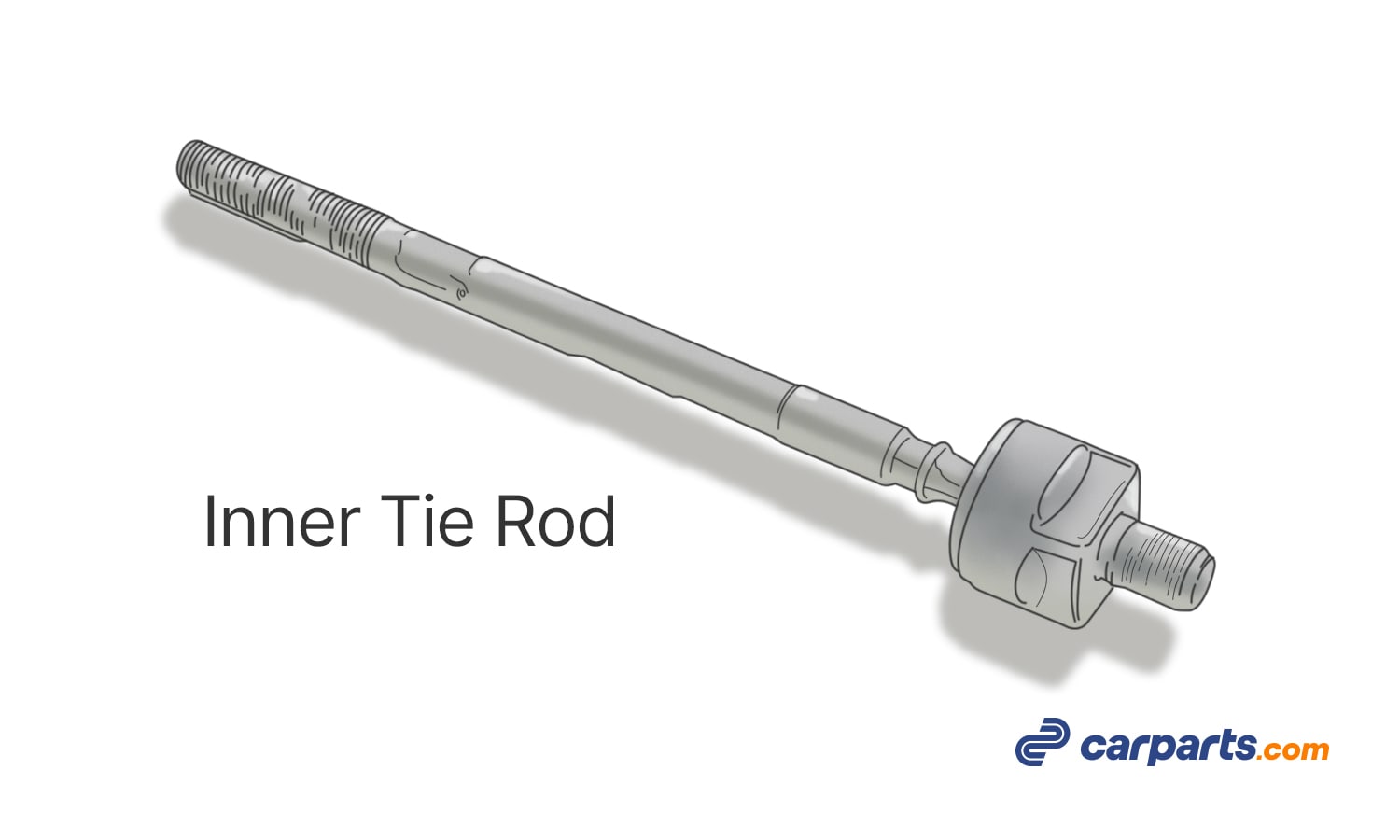
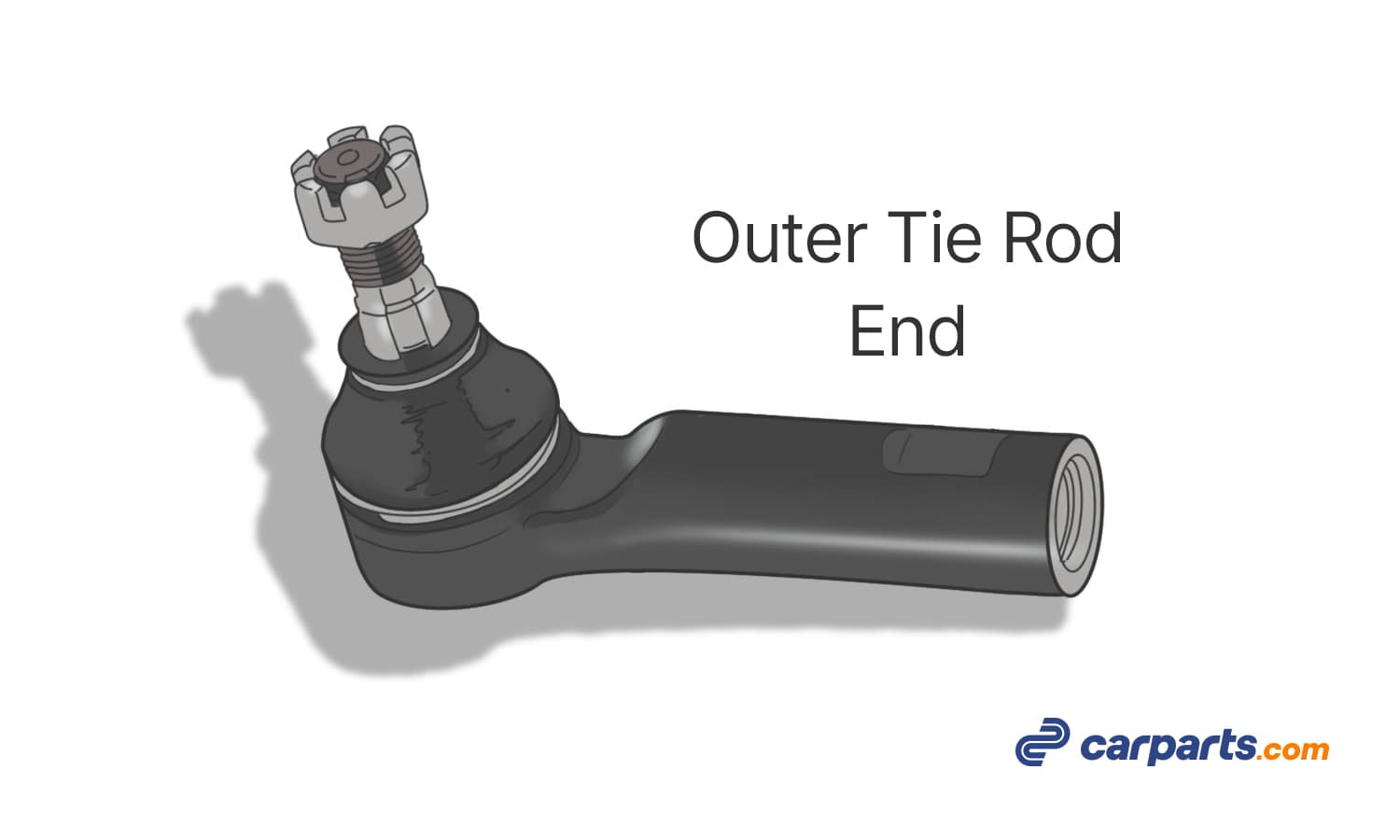
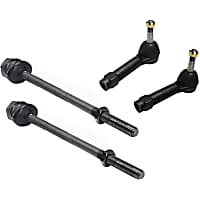 Tie Rod End
Tie Rod End
 Tie Rod Assembly
Tie Rod Assembly
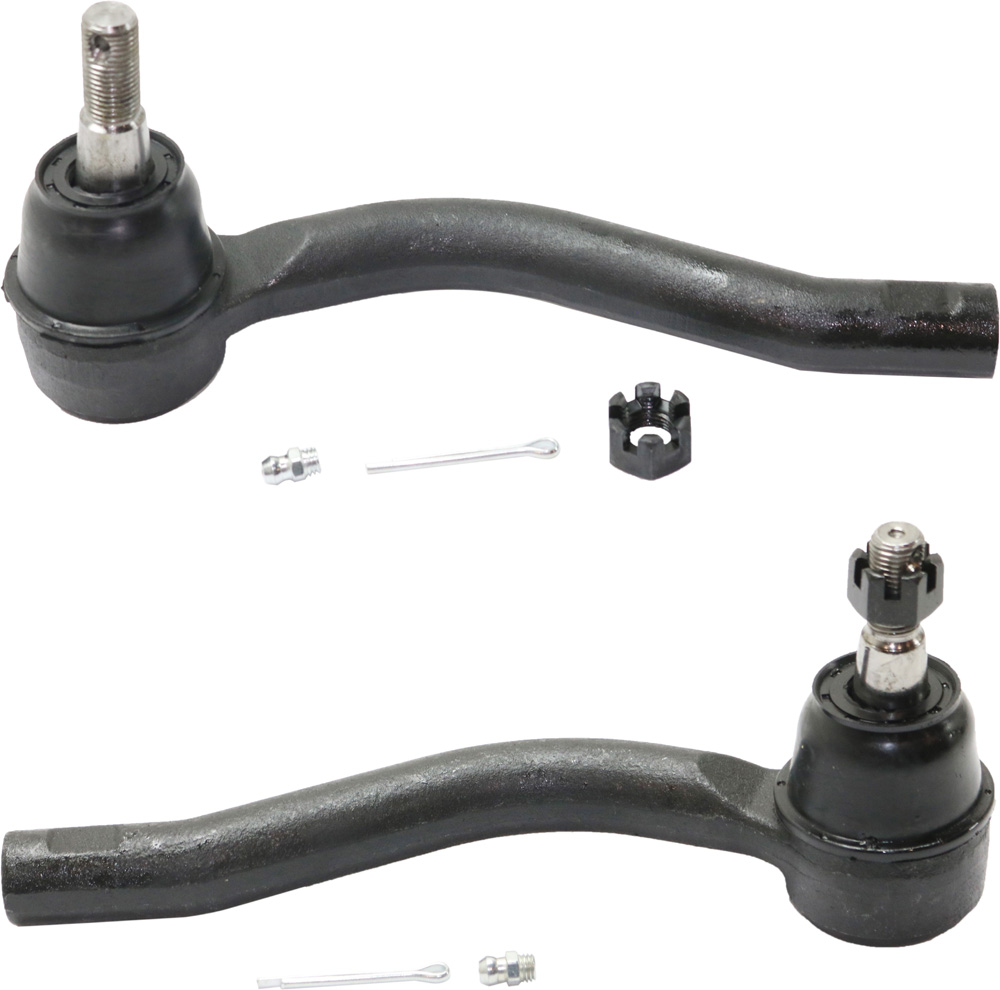

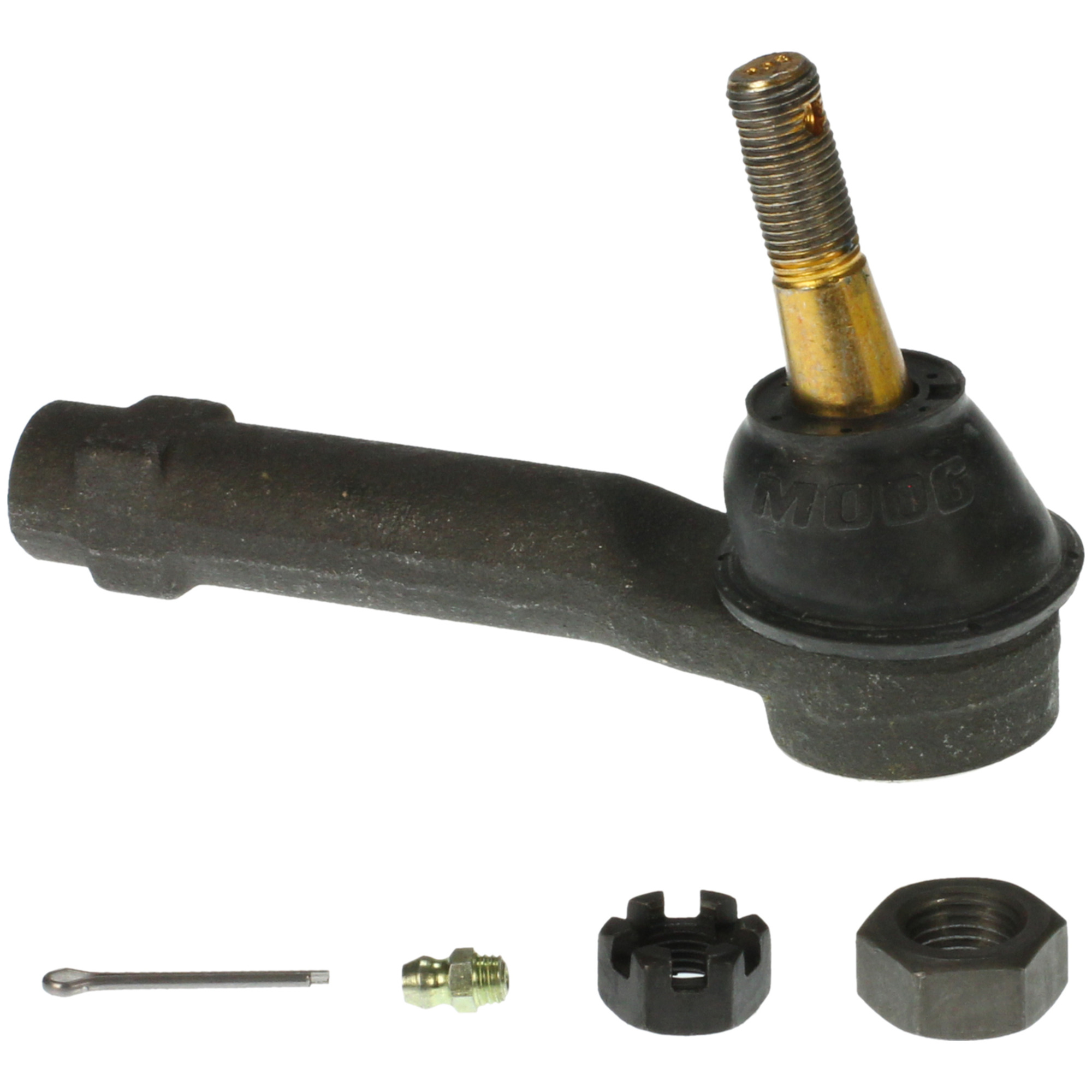





























how to, replace rack & pinion seal
Hi David,
Rack and pinion assemblies have a few different seals. But the most common location for a rack to leak is the end seals (you’ll usually see fluid leaking from the dust boots). Typically, professional repair shops address this issue by replacing the entire rack and pinion assembly. While it may be possible to replace just the seals if you follow the instructions for rebuilding the rack and pinion, replacing the entire assembly is much easier.